Table 6. Applicants, Entrants, and their Characteristics for the Past Five Years
Overview
This table is based on UCLA’s admission data over the last 5 years. It verifies that participating departments/programs have a selective admissions process, competitive educational program already in place, diverse student community, and an appropriate number of matriculated positions available to support additional training grant appointments.
Overall Instructions
Table 6A (Pre-Docs) & Table 6B (Post-Docs)
- These tables report admission data for departments/programs listed in Table 1 (pre-docs) and mentors' labs (post-docs).
- This section is comprised of 12 tables organized in two parts. Part I (Counts) & II (Characteristics) each contain six separate data tables: one table for each of the past 5 years plus a final table summarizing the mean values of each year. See sample tables below for an illustration of this format.
- For Table 6A (Pre-docs), omit participating departments/programs that do not offer pre-doc programs. Clinician departments will be displayed in Table 6B (Post-docs).
- Omit trainees admitted solely to obtain master’s degrees.
- Begin with the most recently completed year and work backward.
- If only one department is participating in the proposed training program, only enter the overall total for each year.
- Data collection recommendations:
- For 6A (Pre-Docs): Report data based on participating departments only. Collect data for this table by contacting participating department’s graduate/PhD programs.
- For 6B (Post-Docs): Report data based on post-doc trainees within mentors' labs (not all trainees within participating departments). Search online and/or contact mentors to collect degree(s), publications, and prior institutions of their post-doc(s).
- Bold all totals in the final row.
- Page Limit: None. For more information visit our FAQs.
Summarize Table 6 data in the Research Training Program Plan's narrative Trainee Candidates and Qualifications of Trainee Candidates and Admission and Completion Records subsections, including overall numbers of potential trainees, their credentials, characteristics, eligibility for support, and overall enrollment trends.
For Post-doc & combined programs: In addition to the aforementioned, clearly describe the recruitment process for post-doc trainees (e.g., whether candidates are selected from individuals in the laboratories of proposed faculty members or whether there is a formal application process to the training program, etc.).
Helpful Hints
Diversity and Inclusion is Important
-
UCLA and the NIH have a vested interest in increasing underrepresented groups in research. Strongly consider how your training grant can enhance diversity and create plans to increase diversity if data tables indicate room for improvement.
-
Example: During a renewal application process, the PIs recognized that there was room to improve the number of underrepresented groups in their training program. The PIs made a note on the data table about a new approach to recruiting diverse groups though an asterisk at the start of each URM cell in Part II (Characteristics) and expanded on that plan in detail in the program plan.
Guidance by Column
Part I. Counts
Title the first table “Most Recently Completed Year: “YYYY-YYYY”, the next four tables “Previous Year: YYYY-YYYY", and the sixth table “Means Across All Years.”
Sub-Tables 1 - 5
Complete the following information for each participating departments/program listed in Table 1. Ensure the same naming conventions are used.
- Total Applicant Pool. Number of individuals who formally applied for admission to the corresponding department
- Applicants Eligible for Support. Subset of the total applicant pool (column 2) who formally applied and were eligible for support on the proposed training grant*
- New Entrants to the Program. Number of new matriculated students to the department within the table’s given timeframe (see column 1)
- New Entrants Eligible for Support. Number of new entrants to the department who were eligible for inclusion in the proposed training grant*
- New Appointees to this Grant (Renewal/Revision Applications Only). New applications delete this column. For each year of the renewal period (past 5 years), list Departments from Table 1. For each Department, total the appointed trainees in the year they were admitted to that department, not to the training program itself. List 0 for any year or Department, if none apply.
- Example: Jane Doe was admitted the Department of Neurosurgery between 2017 - 2018 and appointed to a training grant in 2020 - 2021 and 2021 - 2022. Jane Doe will only be counted once in the 2017 -2018 table because that was the year she was admitted to the Department.
- Table 6A (Pre-Docs): Do not include students admitted solely to obtain master’s degrees; if only one department is participating, only enter the overall total for each year
- Table 6B (Post-docs): Only include post-doc applicants who could be considered candidates for the proposed training program
*Eligibility: In most cases, eligible candidates are citizens or non-citizen nationals of the U.S. or permanent residents. They are required to pursue their research training full time and are normally assigned 12-month appointments, but no less than 9 months. Check the specific FOA for full details.
- Pre-docs: Trainees must be enrolled in a program leading to a PhD or equivalent research doctoral degree program. Health-professional students who wish to interrupt their studies for a year or more to engage in full-time research training before completing their formal training programs are also eligible.
- Post-docs: Trainees must have received a PhD, MD, DDS, or comparable doctoral degree at the time of their training grant appointment start date. Check the specific FOA for a list of comparable doctoral degrees. Individuals in postgraduate clinical training who wish to interrupt their studies for a year or more to engage in full-time research training before completing their formal training programs are also eligible.
Sub-Table 6
Means Across All Years: Summarize UCLA’s admission data by providing the mean value for all 5 years of support (previous 5 tables). Title the first row “Total All Years” and the second row “Mean Count Across Years.” Provide a mean for every column described above.
Part II. Characteristics
Complete the following information for each category of entrants as defined in Part I, with the following rows. As with Part I, title the first table “Most Recently Completed Year: “YYYY-YYYY,” the next four years “Previous Year: YYYY-YYYY," and the sixth table “Means Across All Years.”
Guidance by Row
Sub-Tables 1 - 5
Table 6A (Pre-docs)
- Mean Months of Prior, Full-Time Research Experience (range). For many trainees, this will reflect summer months or full-time research experience following their undergraduate degree; to keep baseline data consistent, convert part-time academic-year research experience for academic credit to full time (based on a 40-hour work week); exclude lab work associated with a college course (e.g. organic chemistry course with a lab component); list to one decimal place and include the range in parenthesis (i.e. 0-6)
- Example: A trainee did academic research for credit 15 hours/week for 8 months (or 32 weeks). This means they worked for a total of 480 hours. Now convert to full time: 480 divided by 40 hours/week = 12 days or 3 months of full-time work.
- You can contact the department’s Student Affairs Officer for help collecting this data.
- Prior Institutions. For columns 4-6, enter names of trainees’ prior bachelor’s-degree granting institutions attended that conferred the degree (abbreviations allowed); if multiple trainees have the same prior institution, list once followed by the number of trainees in parentheses, e.g. UCLA (4)
- Percent from Underrepresented Groups. For columns 4-6, enter the percent of individuals from underrepresented groups*
- Mean GPA (range). For columns 2-6, enter the mean GPA and range using a 4.0 scale (e.g. 3.2-4.0 (3.5))
Table 6B (Post-docs)
- Mean Number of Publications (range). For columns 2-6, enter the mean number calculated to one decimal place and include the range in parenthesis (i.e. 0-6) at the time of the trainee’s application to the PhD program
- Mean Number of First-Author Publications (range). For columns 2-6, enter the mean number calculated to one decimal place and include the range in parenthesis (i.e. 0-6) at the time of the trainee’s application to the PhD program
- Prior Institutions. For columns 4-6, enter the names of trainees’ prior doctoral-degree granting institutions attended that conferred the degree (abbreviations allowed); if multiple trainees have the same prior institution, list once followed by the number of trainees in parentheses, e.g. UCLA (4)
- Percent from Underrepresented Groups. For columns 4-6, enter the percent of individuals from underrepresented groups*
*The following racial and ethnic groups have been shown to be underrepresented in biomedical research. Visit the Diversity Supplement webpage to learn about NIH’s definition of Diversity Groups.
- Black or African Americans, Hispanics or Latinos, American Indians or Alaska Natives, and Native Hawaiians and other Pacific Islanders
- Individuals with disabilities, who are defined as those with a physical or mental impairment
- Individuals from disadvantaged backgrounds who meet specific criteria (see more information)
Sub-Table 6
Means Across All Years: Summarize the proposed training grant’s admission data by providing the mean value for all 5 years of support (previous 5 tables).
Sample Table 6
Note: Follow NIH formatting guidelines – this is a visual demonstration and does not reflect NIH formatting or accurate information/data.
Table 6A. Applicants, Entrants, and their Characteristics for the Past Five Years: Predoctoral
Part I. Counts
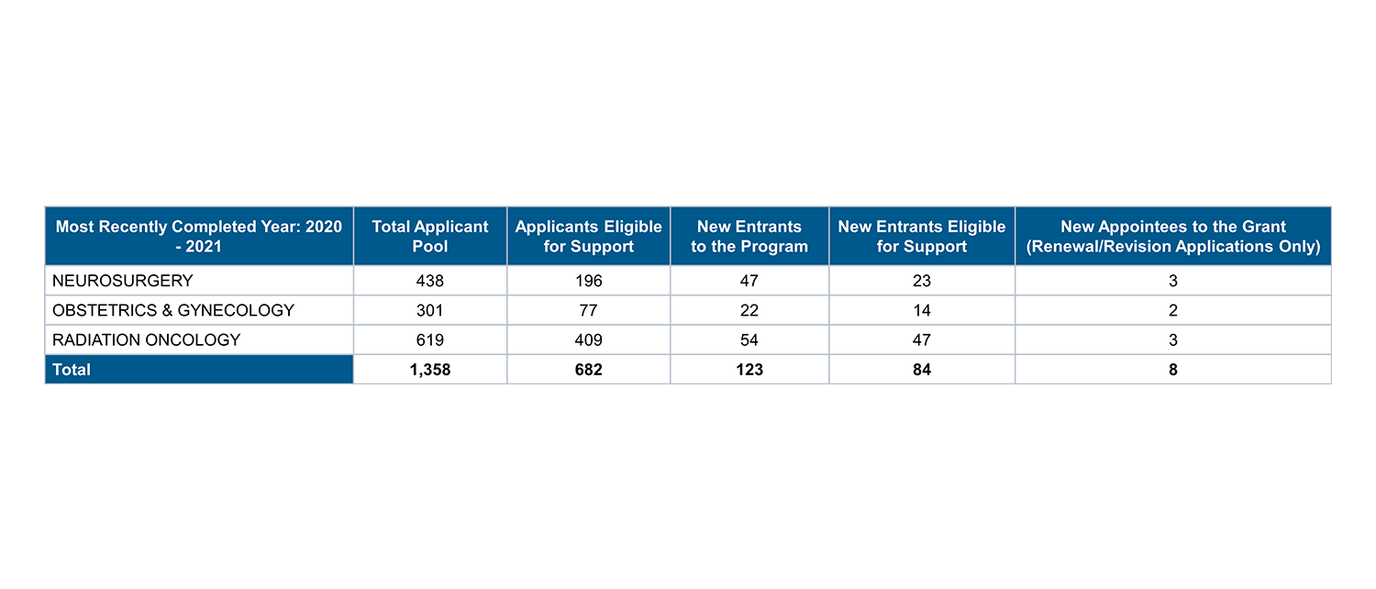
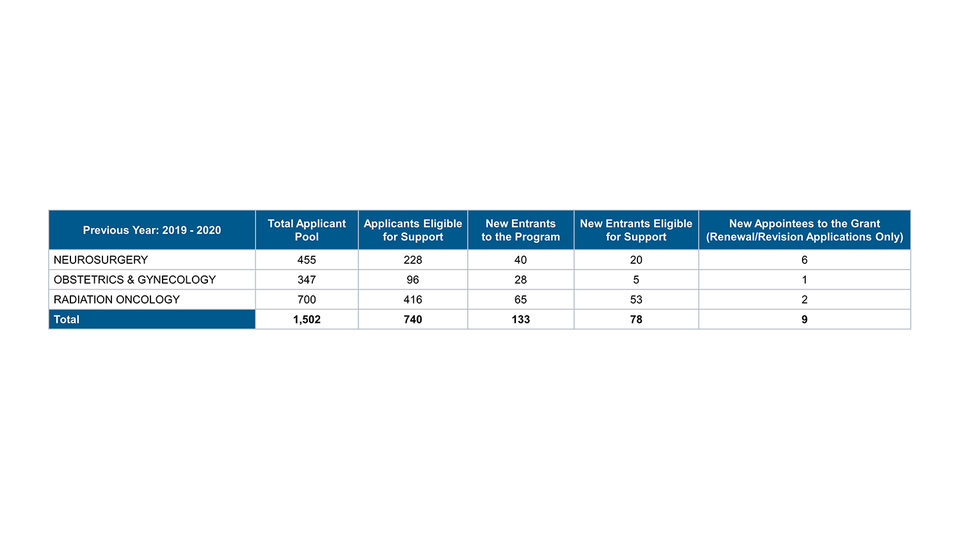
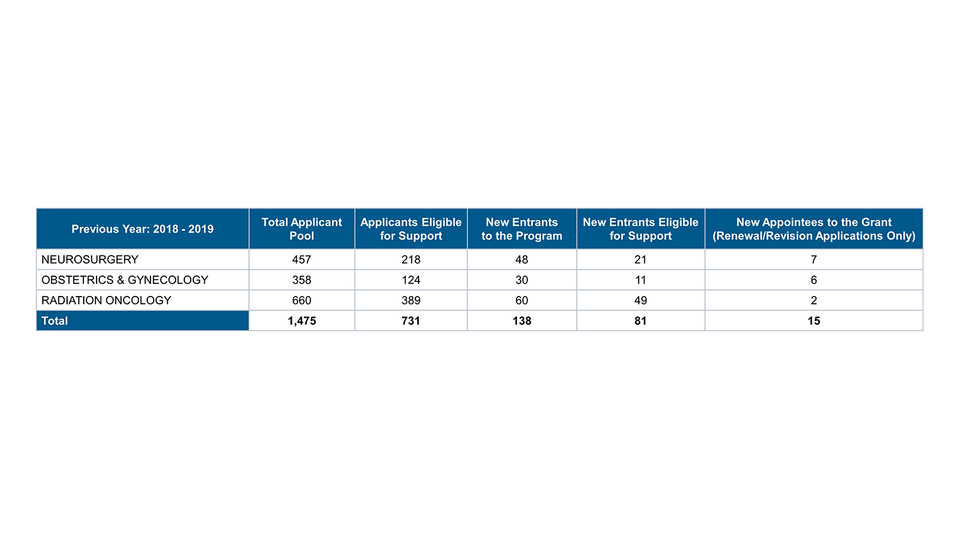
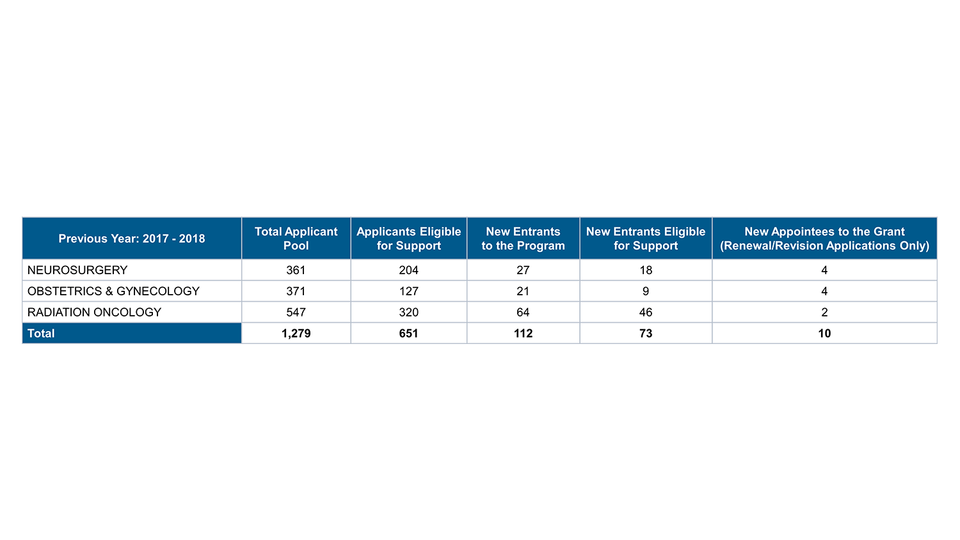
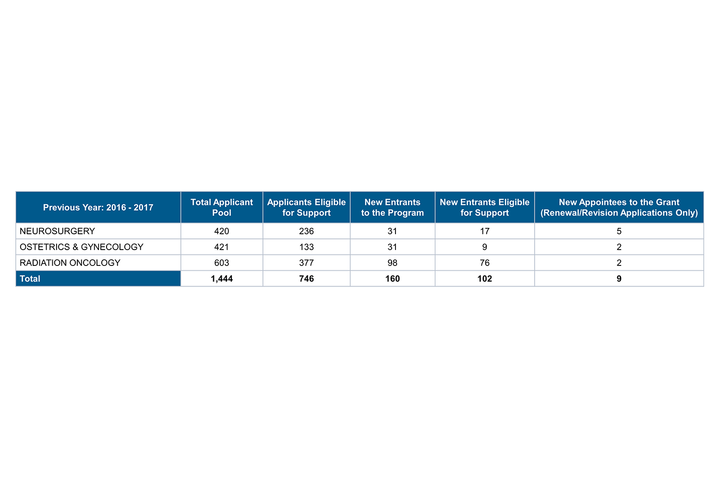
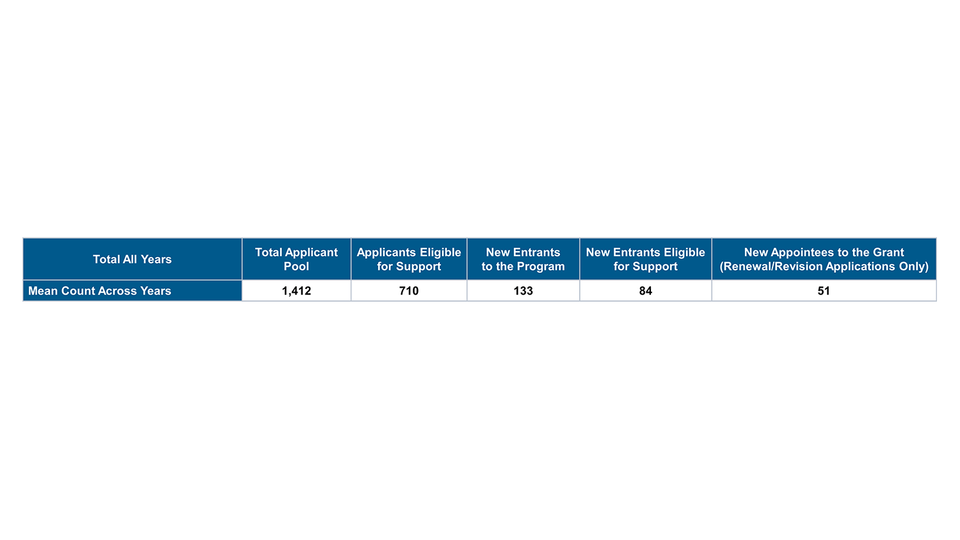
Part II. Characteristics
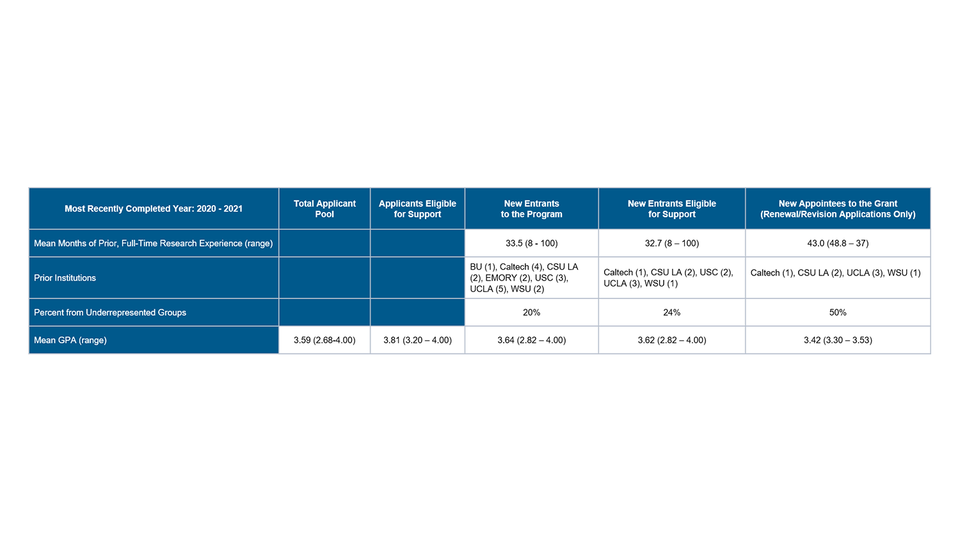
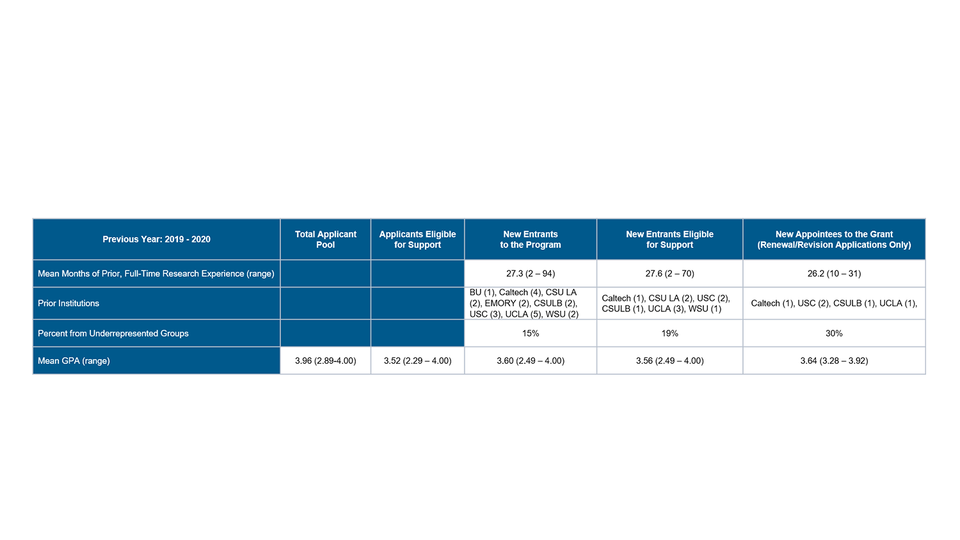
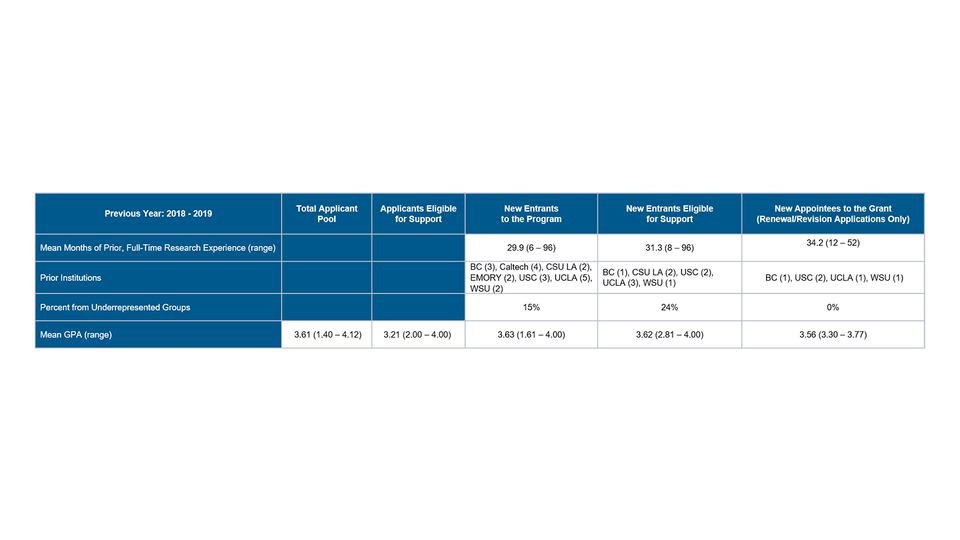
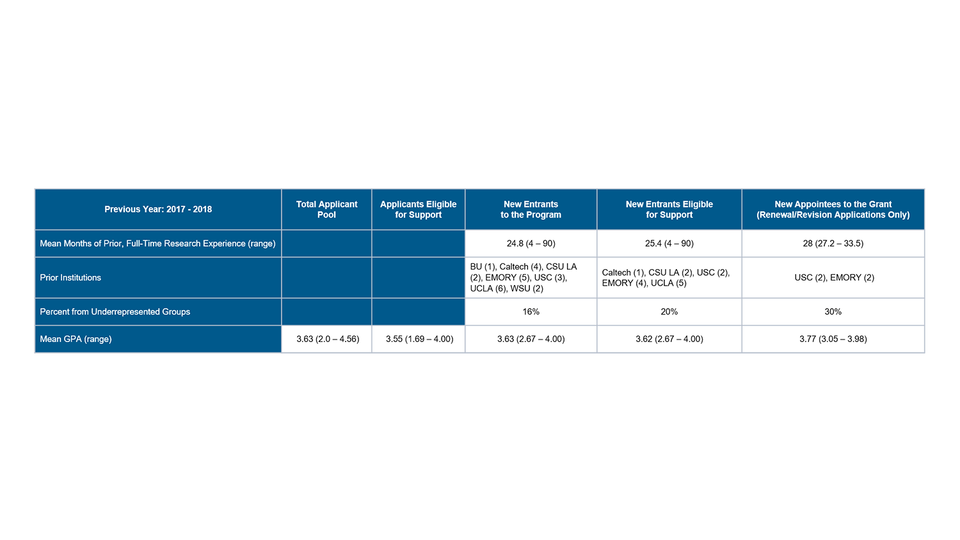
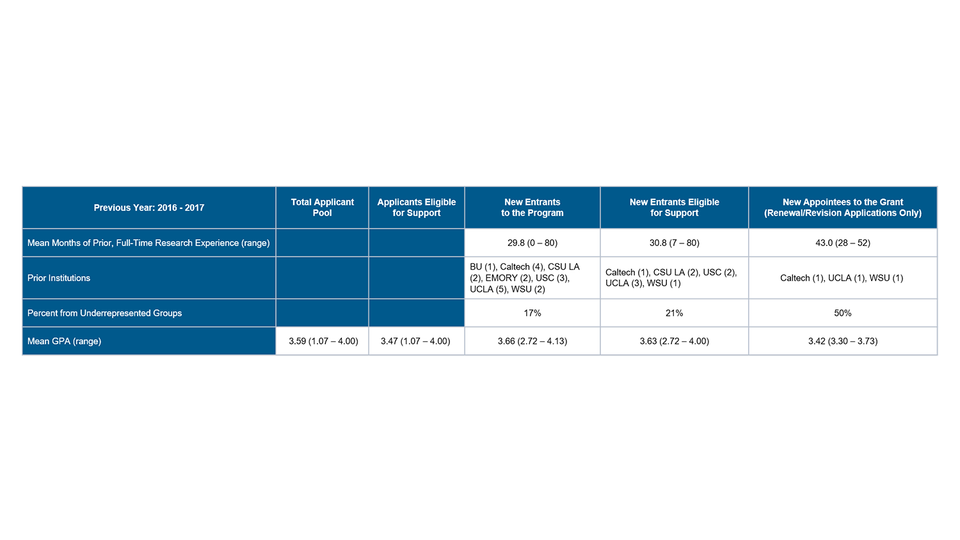
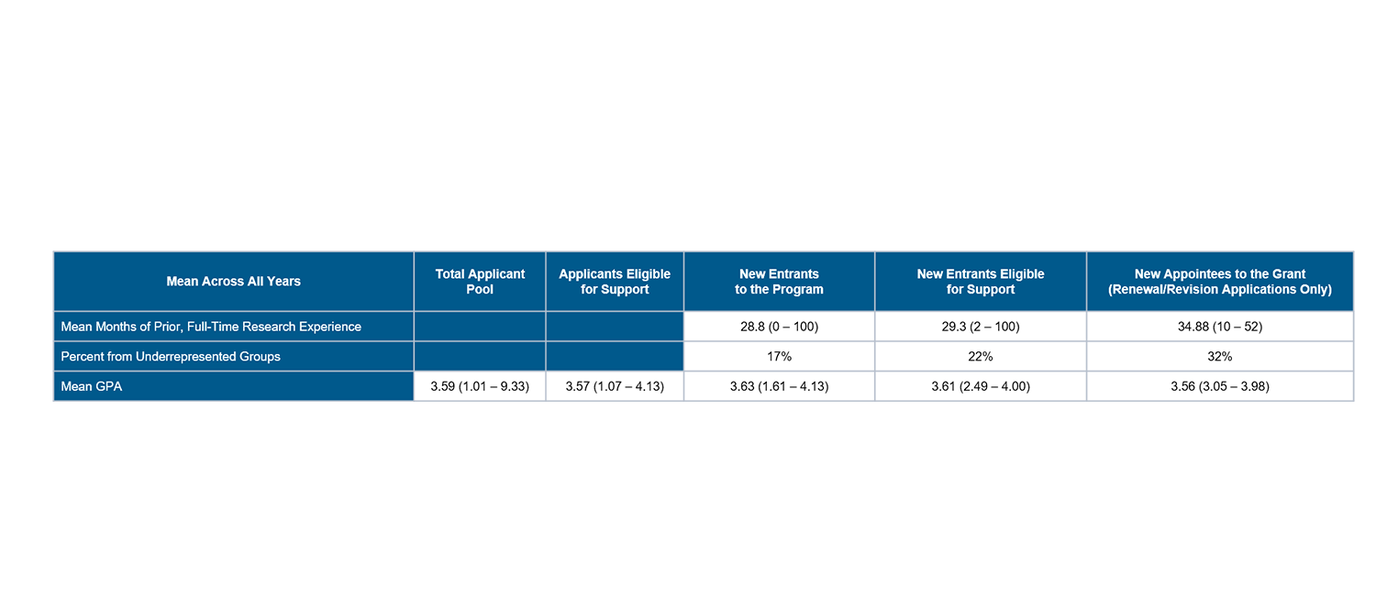
Table 6B. Applicants, Entrants, and Their Characteristics for the Past Five Years: Postdoctoral
Part I. Counts
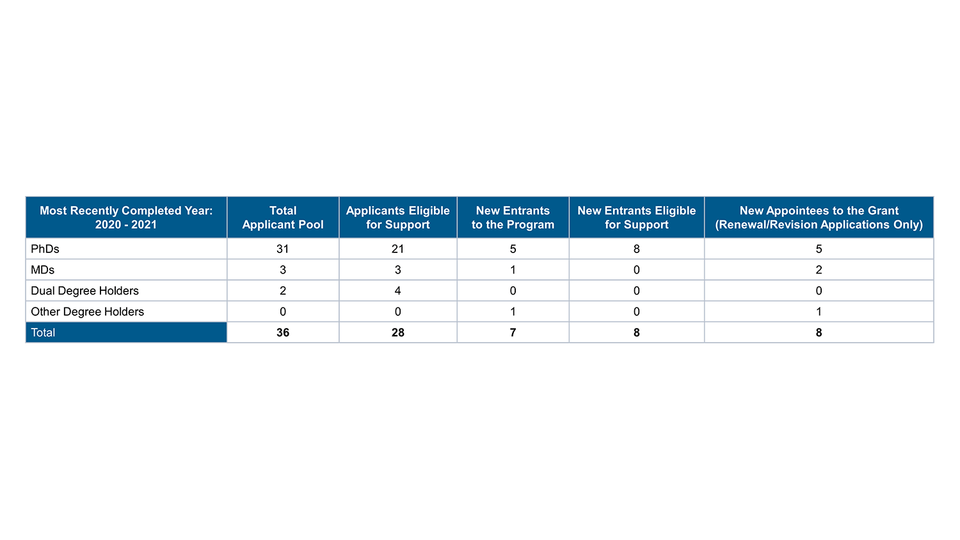
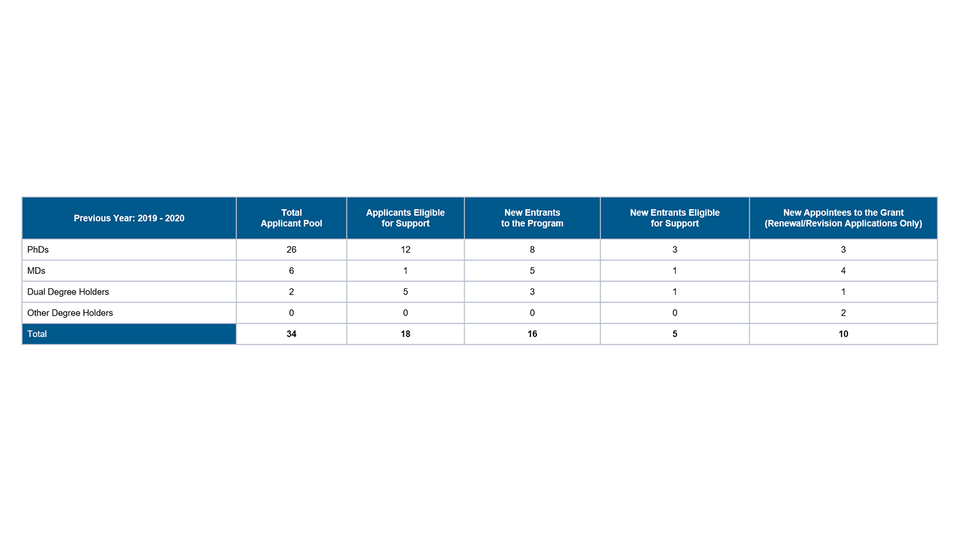
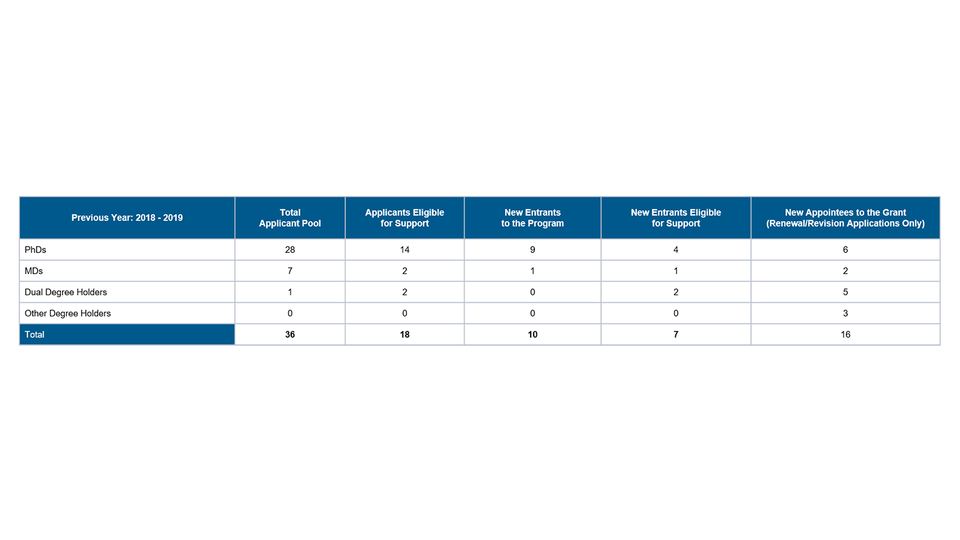
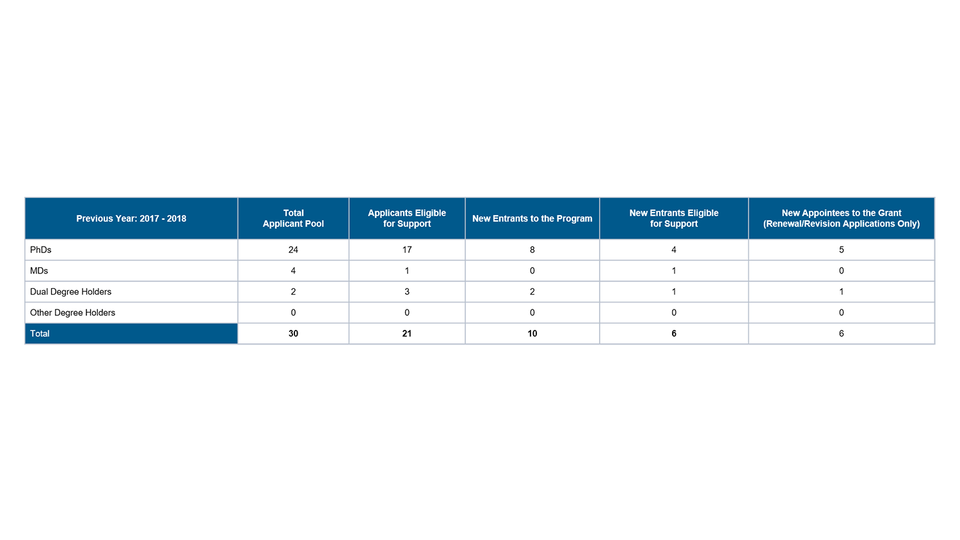
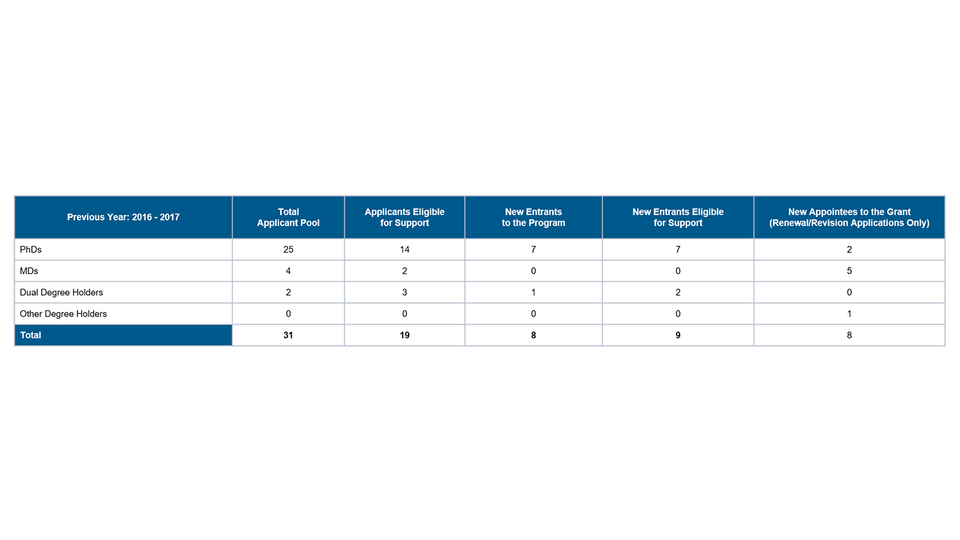
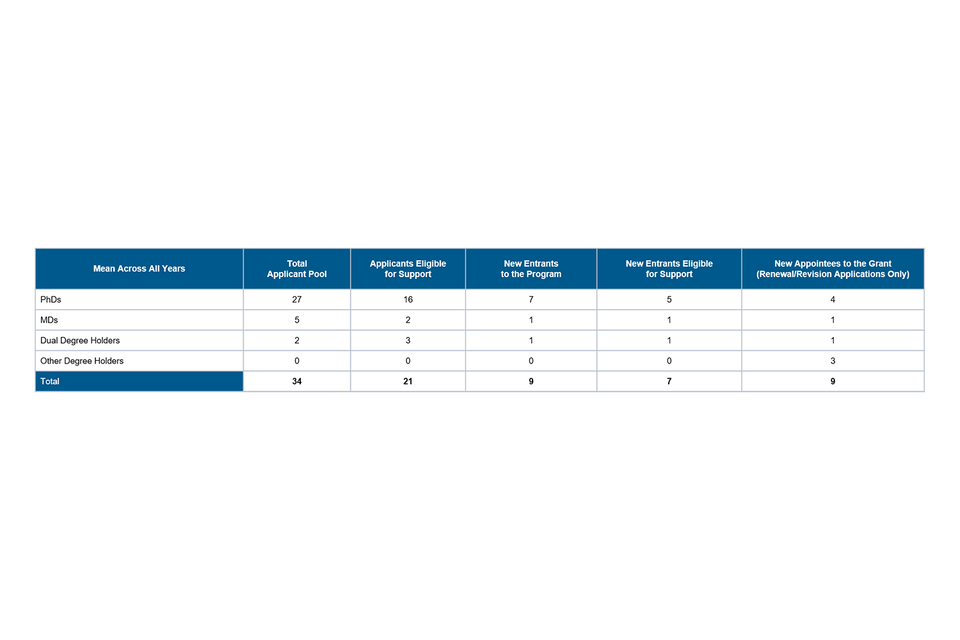
Part II. Characteristics
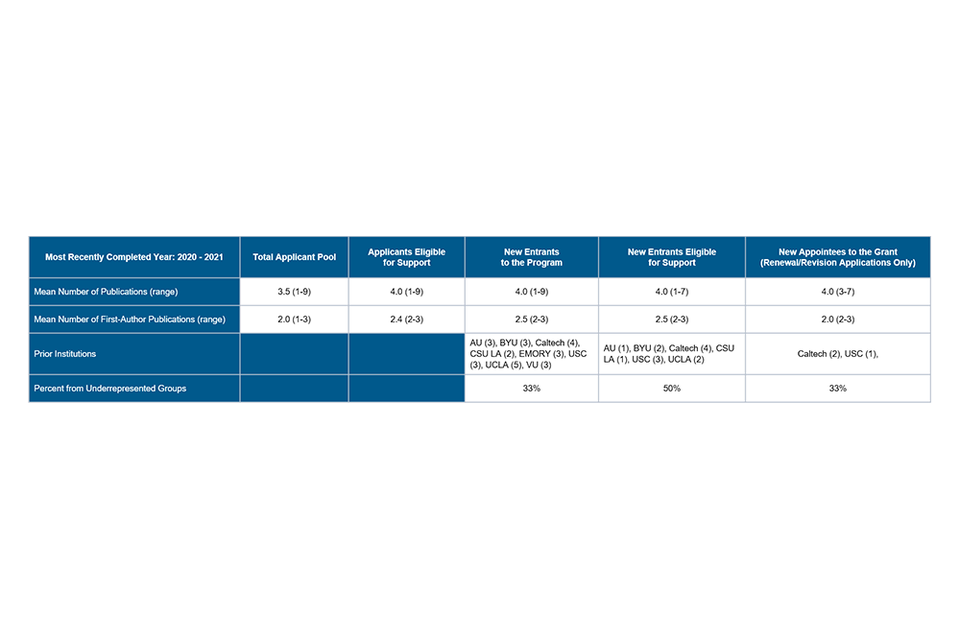
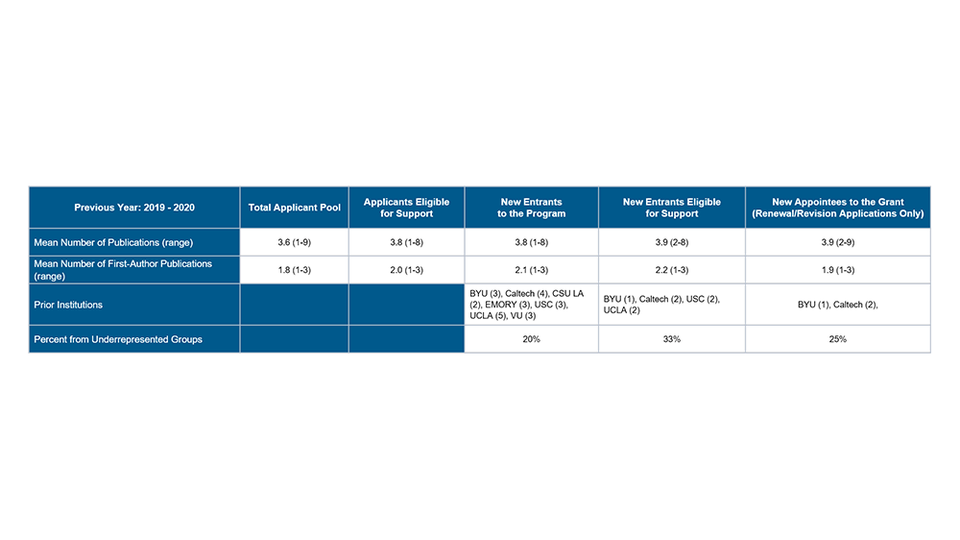
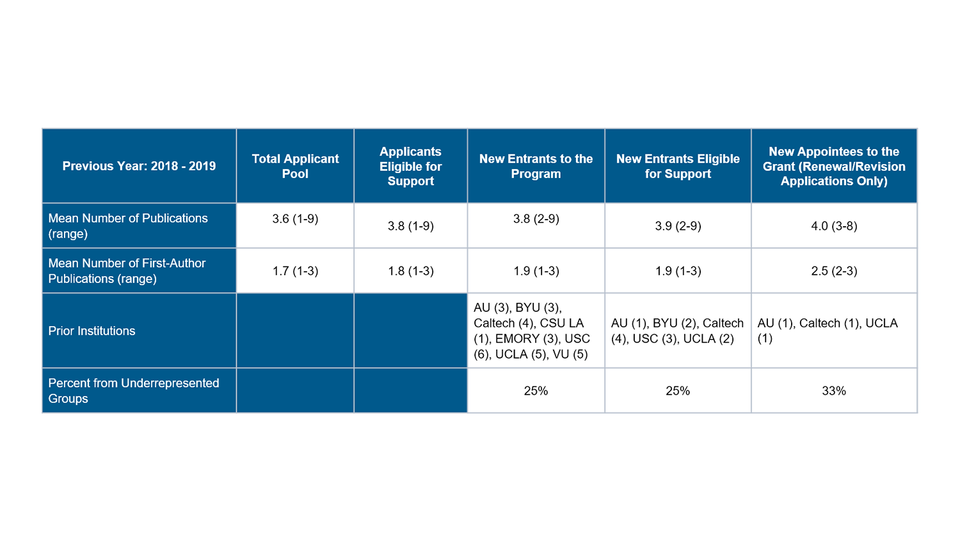
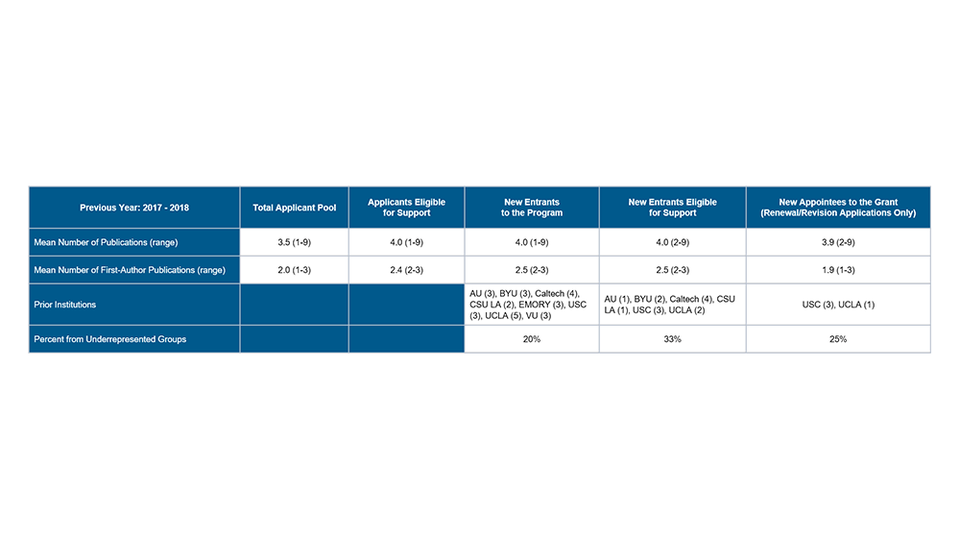
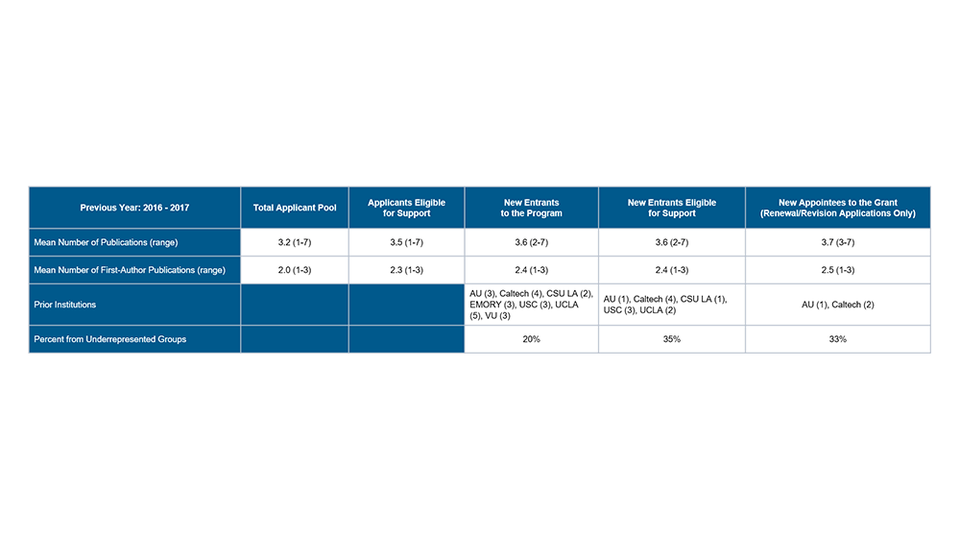
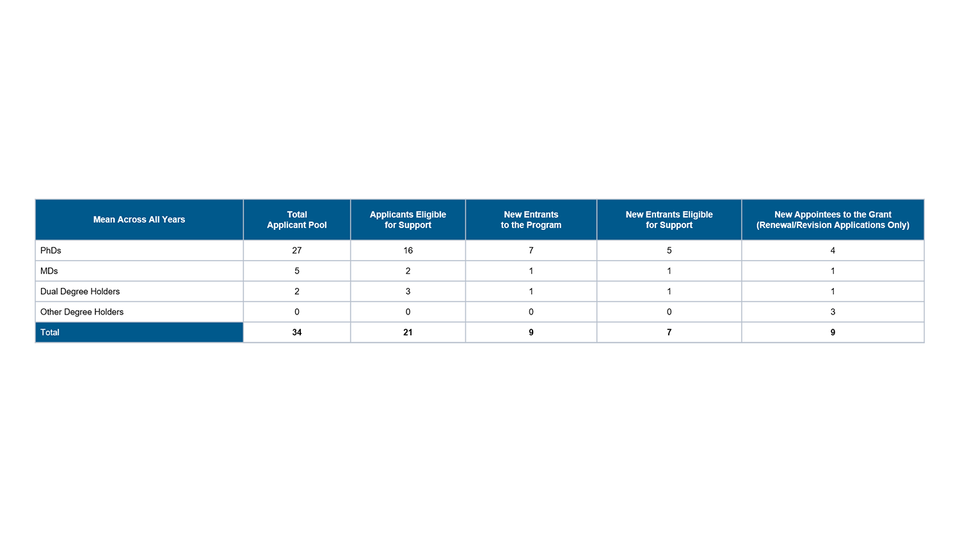
Templates
- NIH Blank Template: Table 6A (Microsoft Word)
- NIH Blank Template: Table 6B (Microsoft Word)
- Contact GSUTraining@mednet.ucla.edu for formatted Microsoft Excel templates
NIH Resources
-
Data Table Form Library (Please note as of January 2023 NIH is still utilizing FORMS G for Data Tables)
- Consolidated Sample Data Tables and Instructions (Microsoft Word)
- Blank Data Table Template: 6A (Microsoft Word)
- Blank Data Table Template: 6B (Microsoft Word)
- Data Table FAQs